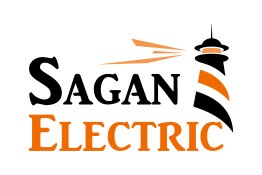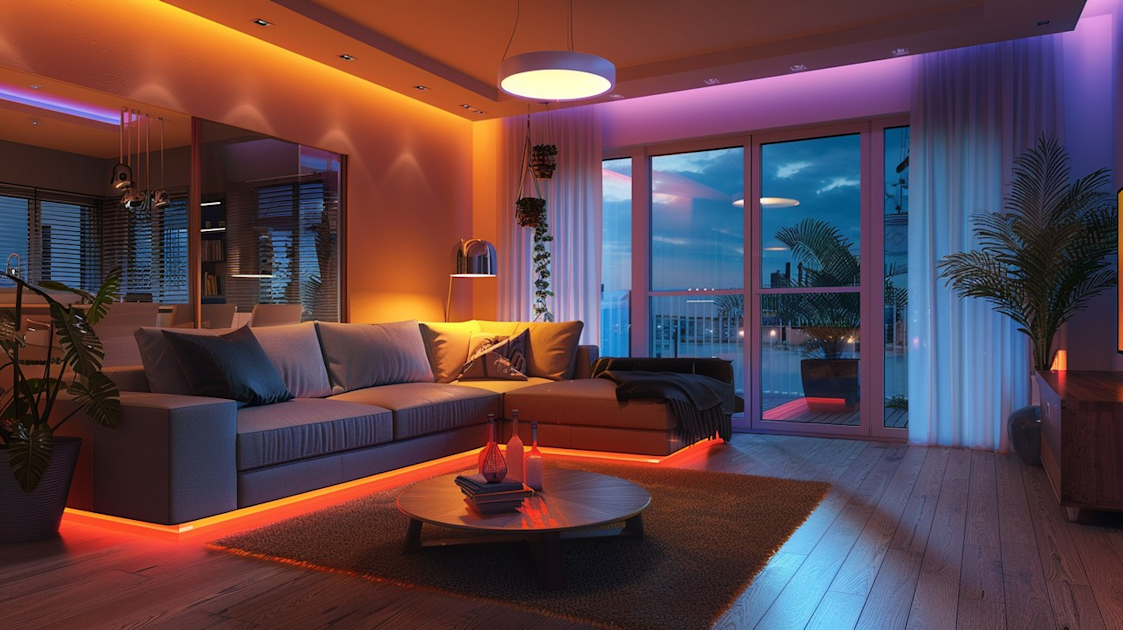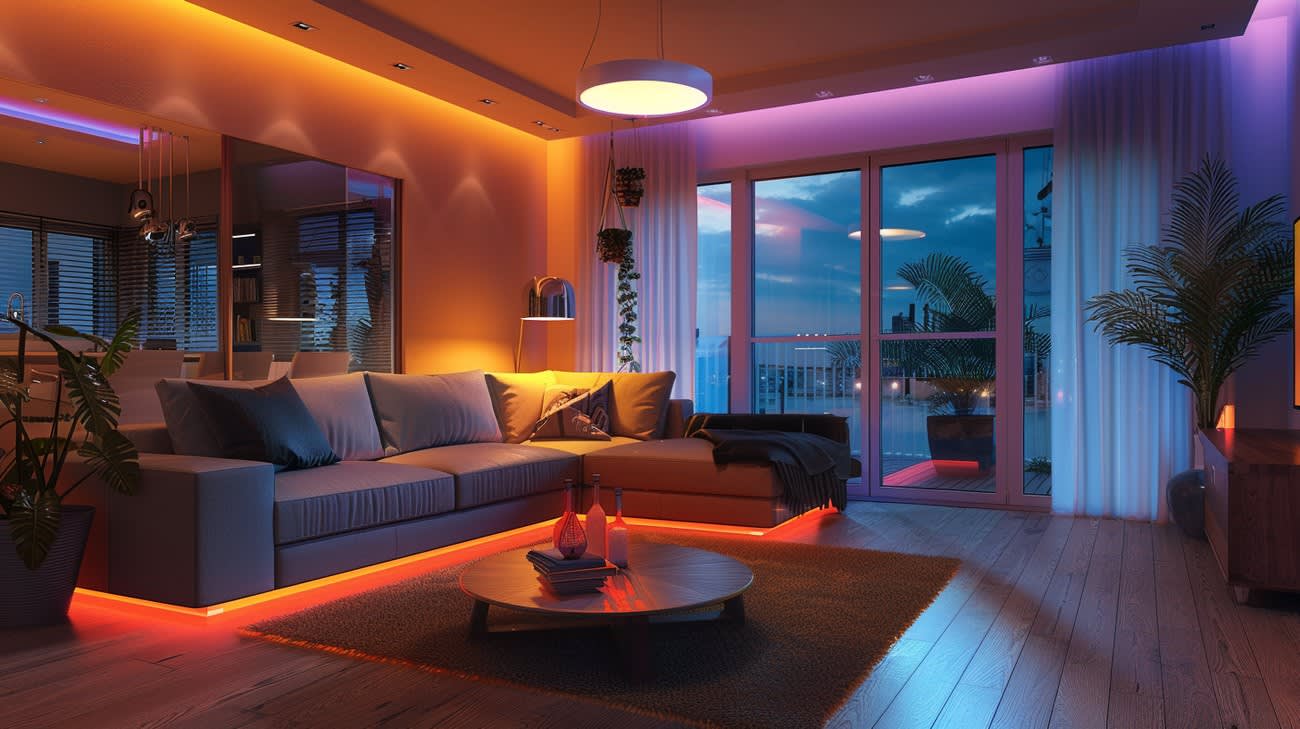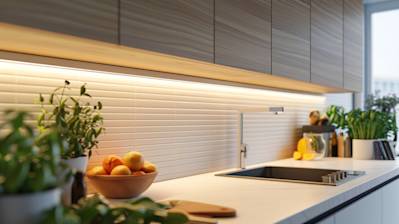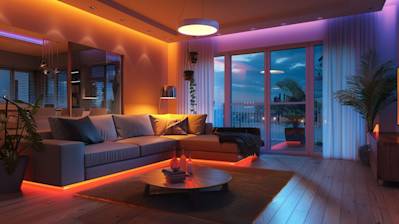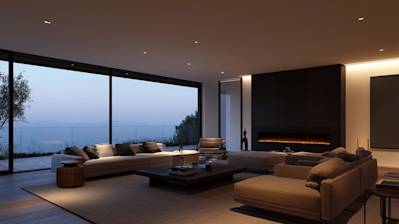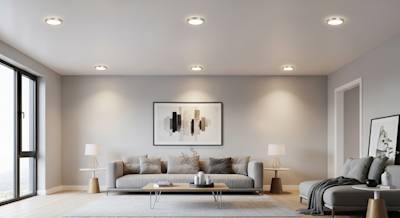In the era of digital advancement, our homes are becoming more intelligent, thanks to the surge in smart home technologies. Among the various upgrades, smart home lighting installation stands out as an essential feature that offers both functionality and sophistication. This guide delves deep into the world of smart lighting, exploring its benefits, components, and installation process. So, if you're ready to illuminate your life with smart lighting, read on!
Understanding Smart Home Lighting
Smart home lighting is more than just a modern twist on traditional lighting. It integrates lighting technology with home automation to allow you to control lights via apps, voice commands, or sensors. Before diving into the installation, let's explore why this has become a popular choice for many homeowners.
Benefits of Smart Lighting
Smart lighting offers numerous advantages that go beyond just convenience. Here are a few reasons why it has become so ubiquitous:
Energy Efficiency: One of the most significant benefits is energy savings. Smart bulbs, usually LED, use far less energy than conventional incandescent bulbs. You can also schedule lights to turn on or off automatically to further reduce energy wastage.
Customizable Ambiance: With smart lighting, you can set the mood of a room with just a tap on your smartphone or a voice command. Adjust brightness, color, and even create lighting presets for different occasions.
Enhanced Security: Lights that can be controlled remotely or set on timers can make it look like someone is home, even when you're away. Integration with security systems allows for things like lights turning on when motion is detected.
Seamless Integration: Smart lighting systems often integrate with other smart home devices, creating a cohesive and intelligent ecosystem. For instance, your lights can sync with your entertainment system to enhance movie nights or gaming sessions.
Convenience: Forget about manually switching lights on and off. Smart lighting allows for control from anywhere, providing immeasurable convenience to the user.
Components of a Smart Lighting System
Before embarking on the installation journey, it’s important to familiarize yourself with the primary components involved in a smart lighting system.
Smart Bulbs
Smart bulbs are the most straightforward entry point into smart lighting. They can fit into standard light fixtures and are available in various styles and brightness levels.
Smart Switches and Dimmers
Smart switches replace traditional light switches, allowing you to control your lights remotely. Meanwhile, smart dimmers enable you to adjust the lighting level and mood effortlessly.
Smart Lighting Hubs and Bridges
While some smart bulbs and switches operate independently, others require a hub or bridge to connect them to your Wi-Fi network and enable remote access and control.
Motion Sensors and Smart Controls
These accessories add functionality and automation to your lighting system, ensuring lights turn on when motion is detected or off after a specified period of inactivity.
Mobile Apps and Software
The brains behind smart lighting are in the apps and software that control the system. They provide interfaces for setting schedules, controlling intensity and color, and integrating with other devices.
Planning Your Smart Lighting Setup
A successful smart home lighting installation begins with proper planning. Here’s a step-by-step approach to help you get started:
Assess Your Lighting Needs
Start by identifying which areas of your home you want to upgrade. Consider the functions of each space and how smart lighting can enhance them. For example, you might want bright, energizing lights in your home office, while preferring softer, warmer tones in the bedroom.
Choose the Right Products
Evaluate different smart lighting products available on the market. Consider compatibility with your existing ecosystem, ease of installation, and features they offer. Some brands may offer proprietary systems that work best within their own product lines.
Plan Your Network
Decide on how smart lights will connect to your home network. If relying on Wi-Fi, check your router’s capacity and strength to ensure it can handle an additional load. Alternatively, consider Zigbee or Z-Wave products, which often require a dedicated hub.
Consider Future Expansion
When planning your setup, think about the future. Even if you're starting small, choose systems that can easily scale and add additional features as your needs grow.
Step-by-Step Installation Guide
Once you have your plan and products ready, it’s time to get your hands dirty. Here's a step-by-step guide to installing smart home lighting:
Gather Required Tools
Start by gathering any tools you might need for installation:
- Screwdrivers
- Wire strippers
- Voltage tester
- Smart bulbs, switches, or dimmers
- Smartphone or tablet for app setup
Install Smart Bulbs
- Turn off the power to the light fixture to prevent electrical shock.
- Remove the existing light bulb.
- Screw in the smart bulb and ensure it’s secure.
- Turn the power back on and follow the manufacturer's instructions to initialize the bulb using its respective app.
Install Smart Switches and Dimmers
- Turn off the circuit breaker to the switch you are replacing.
- Remove the faceplate and unscrew the switch from the wall box.
- Use a voltage tester to ensure there’s no power.
- Disconnect wires from the traditional switch and connect them to the smart switch terminals according to the manufacturer's instructions.
- Secure the switch, attach the faceplate, and restore power.
- Configure the switch using its mobile app.
Connect and Configure Hubs or Bridges
If your system requires a hub or bridge, follow these steps:
- Connect the hub to your router via an Ethernet cable.
- Plug it into a power source and wait for the indicator lights to signal readiness.
- Download the associated app and follow prompts to connect your smart lights to the hub.
Setting Up Schedules and Controls
With hardware installed, you're ready to program and personalize your lighting:
- Open your lighting app and navigate to the schedule section.
- Set times for lights to turn on or off automatically.
- Explore scenes and themes for different activities or times of day.
Integrate with Smart Assistants
For voice control, integrate your lighting system with smart assistants like Amazon Alexa, Google Assistant, or Apple HomeKit. The process involves linking your accounts via each assistant’s app and assigning specific voice commands.
Optimizing Smart Lighting Performance
To get the most from your smart lighting system, consider these optimization tips:
- Regularly update the firmware of your devices to ensure they have the latest features and security patches.
- Experiment with IFTTT (If This Then That) to create complex automations and interactions between devices.
- Use groups to control lights simultaneously, maximizing convenience.
- Connect your lights with motion sensors for improved energy efficiency and security.
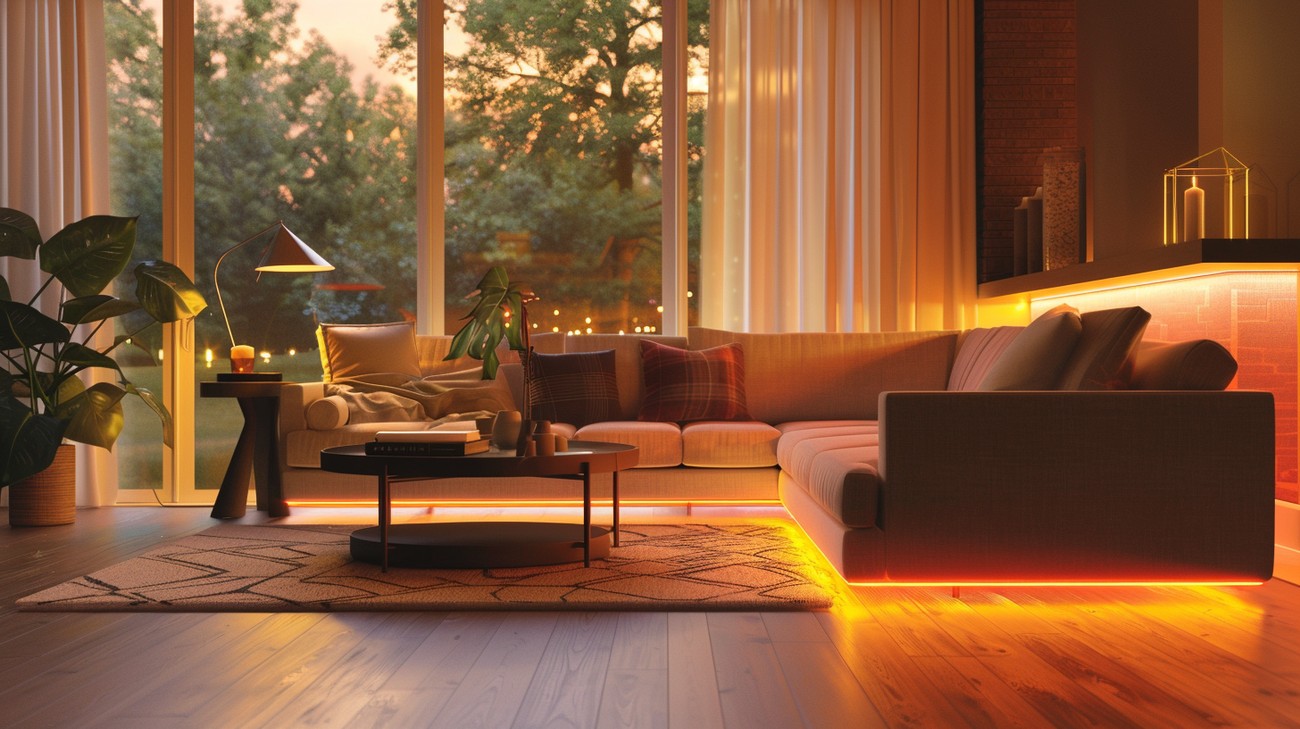
Smart Home Lighting Installation FAQ
What is involved in smart home lighting installation?
Smart home lighting installation involves integrating smart lighting systems into your home, allowing for automated and remote control over your lighting. This typically requires the addition of smart bulbs, switches, or dimmers that are compatible with your home’s existing wiring. Smart lighting systems often operate through a dedicated app, a smart home hub, or a digital assistant like Alexa or Google Assistant. The installation process often includes configuring the devices, connecting them to your Wi-Fi network, and setting up desired scenes or schedules.
How does smart home lighting connect to a home network?
Smart home lighting connects to a home network using technologies like Wi-Fi, Bluetooth, Zigbee, or Z-Wave. Most smart bulbs and switches require a Wi-Fi connection to enable remote control through an app. Some systems might use a dedicated hub, which connects to your router and communicates with your lights using low-energy wireless protocols like Zigbee or Z-Wave. The choice of technology depends on the specific brand and model of smart lighting you choose. Once connected, you'll be able to control your lighting remotely from anywhere via a smartphone app or voice commands.
Are smart light bulbs compatible with existing fittings?
Yes, smart light bulbs are typically compatible with standard light fixtures. They come in various shapes and sizes like traditional bulbs, so you can find versions that fit most types of lamps and sockets. Before purchasing, you'll want to check that the base style (e.g., E26, E27, GU10) matches your fixtures. In addition to shape and size, verify that the bulb's wattage and voltage requirements are suitable for your fittings to ensure a proper match. Smart lighting installation for these bulbs is often as simple as replacing your existing bulbs, after which you can connect them to your smart home system.
How do I choose the best smart lighting system for my home?
Choosing the best smart lighting system requires considering a few factors. First, think about compatibility with your existing smart home devices, as having a cohesive system will enhance functionality. Look for brands that support common platforms like Apple HomeKit, Amazon Alexa, or Google Assistant. Next, consider the type of connectivity (Wi-Fi, Zigbee, Z-Wave) that suits your environment. Evaluate whether you need features like color-changing abilities, scheduling, or energy monitoring. Lastly, read reviews and compare prices to ensure you select a system that meets both your needs and budget.
Can smart lighting lower my energy costs?
Smart lighting can potentially lower energy costs by providing greater control over when and how lights are used. Through scheduling and automation features, lights can turn off automatically when not in use, reducing waste. Many smart bulbs also use energy-efficient LED technology, which consumes less electricity than traditional incandescent bulbs. By setting specific brightness levels and turning off lights remotely via an app when you’re away, you can further minimize unnecessary energy consumption, which, over time, can lead to significant savings on your electricity bills.
Is professional installation required for smart lighting?
Professional installation is generally not required for most smart home lighting systems, as they are designed for easy DIY setup. Changing bulbs, installing smart switches, and configuring your system through an app are tasks many homeowners can handle. That said, if you're unfamiliar with handling electrical components or if your installation involves complex rewiring, it might be wise to hire a professional electrician. They can ensure everything is installed safely and properly, especially if you want to integrate your smart lighting with existing systems or automate multiple aspects of your home environment.
How secure is smart home lighting?
Smart home lighting is generally secure, but there are some considerations to ensure your system remains risk-free. Use strong passwords and regularly update them, as weak credentials can be a potential entry point for unauthorized users. It's also essential to keep your smart device firmware and related apps updated to safeguard against known vulnerabilities. Opt for reputable brands with a track record of prioritizing security in their products. By taking these precautions, you can greatly reduce the chances of unauthorized access to your smart home lighting system.
Can smart home lighting systems be expanded over time?
Yes, smart home lighting systems are typically very scalable. Most systems allow you to start with a few smart bulbs or switches and expand as your needs grow. As long as the new components are compatible with your existing smart home platform or hub, you can seamlessly add them into your system. Make sure to stay within the connectivity range of your hub or router if your system uses Zigbee or Z-Wave. By starting small and expanding, you can gradually convert your entire home to smart lighting, adjusting and improving the setup as you discover new features and functionalities.

Cost Breakdown
Typical Price Ranges
Embarking on a smart home lighting installation journey can be an exciting way to transform your living space, but understanding the costs involved is crucial. In general, you can expect the price for a basic smart lighting setup to range from $200 to $500 for a single room. If you're considering transforming an entire home, costs typically fall between $1,000 and $5,000. This variance often depends on your home's size, the number of fixtures you plan to replace, and the brand of smart lighting chosen.
Factors that Affect Cost
Several factors play a role in determining how much you'll spend on smart home lighting installation:
Number of Lights: More lights mean higher costs, naturally. Each additional smart bulb or fixture adds to the total expenditure.
Type of Lights: Are you going for LED bulbs, smart switches, or integrated smart luminaires? LEDs tend to be less expensive, while integrated systems could spike up the costs.
Brand Selection: Brands like Philips Hue are renowned for quality and can be costlier compared to lesser-known generic brands. A Philips Hue bulb might cost $30-$50 each, whereas a generic one might set you back only $10-$20.
Professional Installation: Hiring a professional electrician will increase costs. Professional installation charges generally range from $50 to $100 per hour.
Home Automation Systems: Integration with smart home systems like Alexa, Google Home, or Apple's HomeKit may add to the complexity and cost.
Cost Comparison (Budget vs Premium Options)
Budget options can be appealing but often come with trade-offs in terms of feature set and integration capabilities. For example:
Budget Option: A $15 smart bulb with basic color-changing features and limited app support. Ideal for beginners or those with minimal integration needs.
Premium Option: A $50 smart bulb from a leading brand offering extensive colors, integration with all major smart home systems, and advanced scheduling features.
Investing in premium options typically provides a longer lifespan, better warranty, and enhanced features, making them a more cost-effective choice in the long run despite the higher upfront cost.
Hidden Costs to Consider
When diving into smart lighting, anticipate possible hidden expenses such as:
Hub Costs: Many smart lighting systems require a central hub for maximum functionality, which can cost $50-$100.
Wi-Fi Extenders: To support connectivity if your home has connectivity issues, a Wi-Fi extender or mesh network might be needed, which could add an additional $100-$300 to the project.
Energy Costs: While smart bulbs are energy-efficient, continuously using features like scheduling and dynamic lighting settings may increase electricity usage.
Ways to Save Money
- DIY Installation: For those with some technical acumen, consider self-installation. This can save on labor costs, especially when swapping out simple fixtures or smart bulbs.
- Bulk Purchase Discounts: Often, buying smart bulbs or fixtures in bulk can lead to discounts, reducing the per-unit cost.
- Sales and Promotions: Keep an eye out for sales around major holidays or events like Black Friday to snag deals on smart lighting products.
- Rebates and Incentives: Inquire about energy efficiency rebates offered by utility companies, which can sometimes offset costs significantly.

Final Thoughts
Smart home lighting installation is all about enhancing your daily life while adding convenience and efficiency to your living spaces. By integrating smart lighting solutions, you can create the perfect ambiance, save on energy costs, and easily control your home's mood with just a tap on your smartphone or a voice command. It’s a simple upgrade that can make a significant difference in your lifestyle, whether it’s setting the scene for a movie night or ensuring your home is well-lit when you arrive after dark.
If you're ready to transform your home lighting and embrace the benefits of smart technology, we invite you to reach out to us at Sagan Electric. As your trusted local experts serving homeowners in Sacramento, CA, we’re here to help you navigate the best options for your unique needs. Let’s schedule a consultation to discuss your vision and explore how we can bring your smart home lighting dreams to life!
Tags: installation, smart home, lighting,
